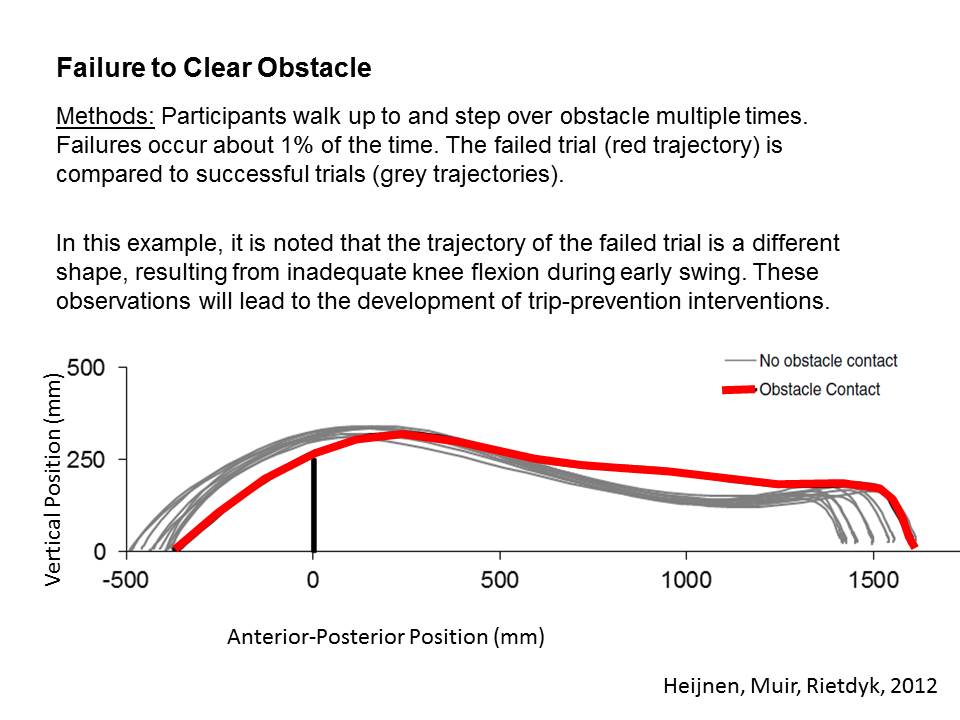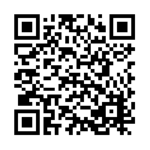Our team has been examining the rare trials (approximately 1% of all trials) where the participant perceived a stationary, visible obstacle and attempted to clear the obstacle, but tripped on the obstacle. Inadvertent failures are typically discarded as there are too few observations, but we have developed a methodology to assess these failures. This research has demonstrated that older adults fail at about the same rate as young adults, but the older adult tends to contact the obstacle with the first limb to cross the obstacle (lead limb). Recovery from a lead limb contact is more difficult, which may partially explain the higher injury rate in older adults. This innovative approach supplements information gained from successful trials to more fully understand proactive control of adaptive gait and will lead to the development of trip-prevention interventions.
PI – Dr. Shirley Rietdyk
Students – Michel Heijnen, Sam Pontecorvo, Brittney Muir, Chris Rhea





